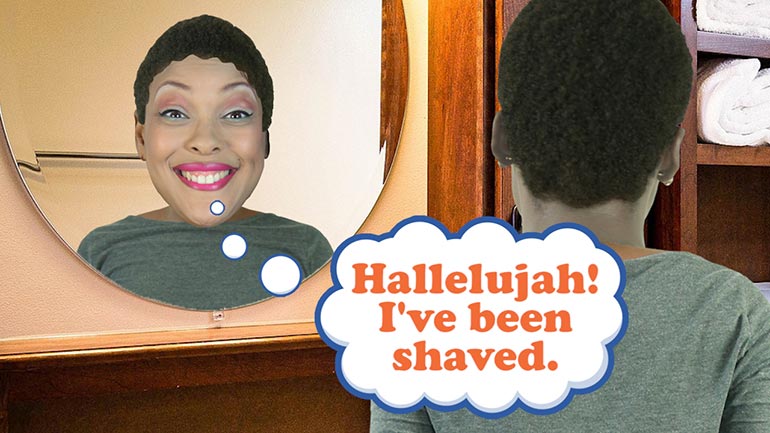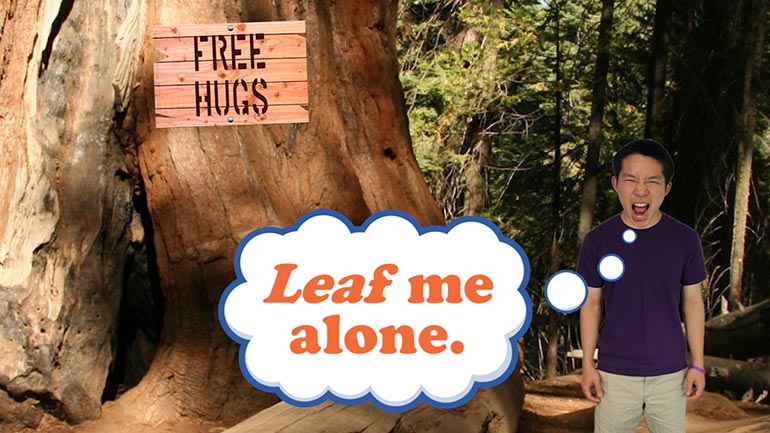ShmoopTube
Where Monty Python meets your 10th grade teacher.
Search Thousands of Shmoop Videos
ELA 4: The Benefit of Visualizing 6 Views
Share It!
Description:
There are many benefits to visualizing things. For instance, when we're listening to someone who's really boring, we often visualize them being held hostage by worms. For being super boring, of course. Oh and it can also help you understand what you're reading better. Check out the video to find out how.
Transcript
- 00:04
[Coop and Dino singing]
- 00:13
Reading is like learning to play an instrument – the only way to get better is with practice. [Man reading and man playing drums]
- 00:18
Reading is also not like learning to play an instrument in that it doesn’t drive your
- 00:22
entire family crazy, which is always nice. [Boy playing instrument and parents clutching their ears]
- 00:25
But even the most experienced readers – the ones who spend half their lives in the library
Full Transcript
- 00:30
– sometimes come across passages that are straight up confusing. [Old man picks up book and looks confused]
- 00:33
And that's okay!
- 00:34
When this happens, it can be useful to visualize the text.
- 00:37
Take this somewhat confusing passage here:
- 00:40
“The kitchen floor's banana peel on which the chef did slip was ultimately the cause
- 00:44
of the pot of soup's topsy-turvy demise.”
- 00:47
Huh?? What??
- 00:49
Okay so, yeah, the author of this text could be a little more clear… but let’s work [Dino appears with a thesaurus]
- 00:53
with what we’ve got The first step in visualizing this text is
- 00:57
to make sure you've got a handle on all the words involved.
- 01:00
If there are any words we aren't too familiar with, like, topsy-turvy, we can look them [Topsy-turvy in a dictionary]
- 01:04
up in the dictionary.
- 01:06
In this case, topsy-turvy means “upside-down” or “all over the place.”
- 01:10
Now we do the same for any other words we’re not best friends with.
- 01:13
So if we’re a little unfamiliar with “demise,” we can look it up and see that it means “death”
- 01:17
or “end.”
- 01:18
Huh.
- 01:18
So maybe this won't be the happiest sentence in the world… [Sentence cries]
- 01:21
Once we've figured out all the words we weren't too sure about, the next step is to look for
- 01:25
any action. [Man punches a man in the face]
- 01:26
Is anything happening in the text?
- 01:28
In this case, the main action appears to be someone slipping on a banana peel. [Man slips on banana peel]
- 01:31
Now that's something we can visualize!
- 01:33
Heck, we've seen that happen in tons of movies!
- 01:36
Now that we have the action, we should focus on the setting.
- 01:39
Where is this taking place? [A desert and beach setting]
- 01:40
If we know the setting, it’s way easier to visualize the scene.
- 01:43
In this case, the passage says we're in a kitchen, so in that goes. [Boy lying on kitchen floor]
- 01:47
Next, we ask ourselves who the people involved are.
- 01:50
What do they look like?
- 01:51
In this case, it's clearly a chef doing the slipping.
- 01:53
Now we're really getting somewhere. [Boy dressed as chef on the floor]
- 01:55
Now we need to go through and fill in any other blanks with whatever information we
- 01:59
might still have left.
- 02:00
So far, we have the chef in the kitchen slipping on the banana peel.
- 02:04
But what about the last bit?
- 02:05
“The pot of soup's topsy-turvy demise.”
- 02:07
Well, since we know that topsy-turvy means upside-down and all over the place and we [Soup moves upside down]
- 02:11
know that demise means “death” or “end,” then we know that we're visualizing the messy
- 02:15
and upside-down end of a fresh pot of soup. [Soup splats over kitchen]
- 02:17
A tragic scene, but definitely one we can visualize.
- 02:20
So the next time you come across a difficult passage, just play it in your head like a
- 02:24
movie, and you'll have it figured out in no time. [Chef slips and soup splatters all over the kitchen]
- 02:27
And you’ll have a head start on your career as a film director.
- 02:30
Watch out, Spielberg…
Up Next
Sticks and stones, right? Well...only sometimes. It's a good idea to make sure your words aren't going to hurt others. Let's look at some ways to d...
Related Videos
Learn to debate like a champ. It's way better than debating like a chimp. That just takes mudslinging to a whole new level.
Today we'll learn about biographies and autobiographies. And no, the second one has nothing to do with the lives of cars.
In this lesson we'll subject you to some verbs and predicates. Each one is a necessary part of a complete breakfas—er...sentence.
Choosing words carefully is important. You may end up vexing the assemblage of citizens you're conversing with...or you might even just plain bore...




